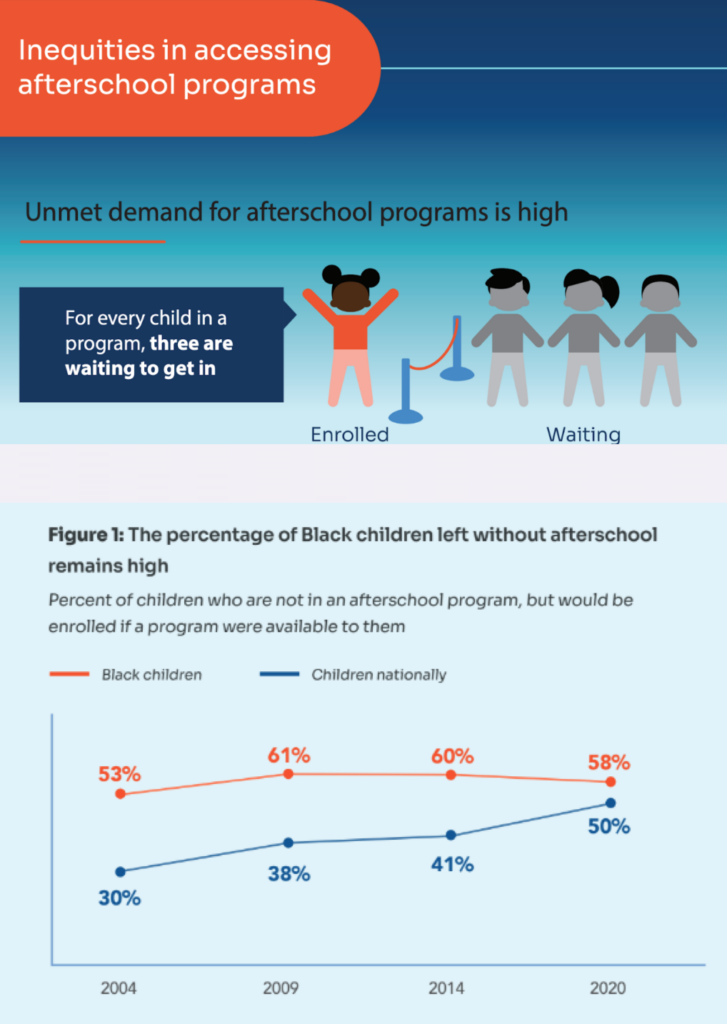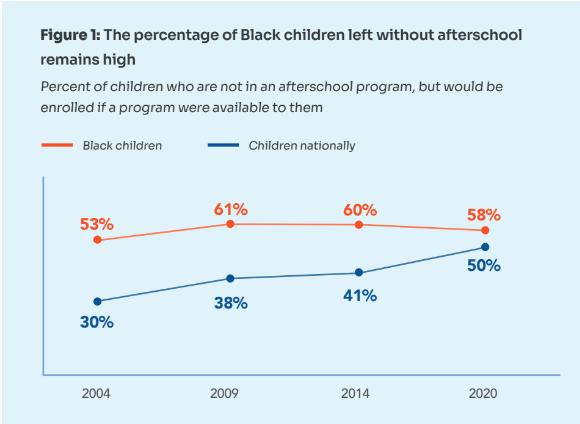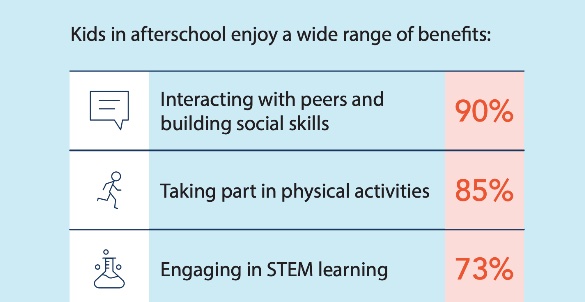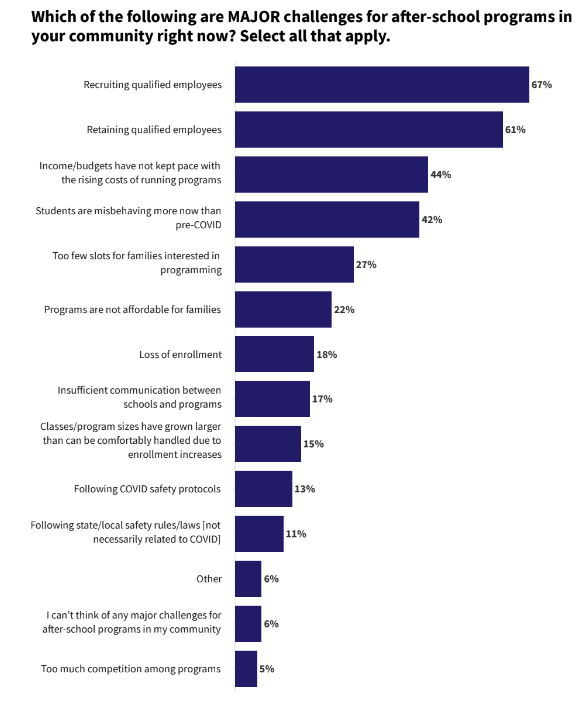Need For Afterschool Programs

Inequity is often readily visible, yet remains unseen.
The unmet demand for quality afterschool programs is immense: an additional 25 million children would be enrolled if a program were available to them.
Unmet demand disproportionally impacts communities of color. According to the 2020 review, 58% of black children and 55% of Latinx children would be enrolled if a program were available to them.

Cost and access are the key obstacles both for families of color and low-income families.

For the 2022-2023 school year, an additional major hurdle for afterschool programs is recruiting and retaining qualified employees.

Findings reported by the National Dance Education Organization (www.NDEO.org) show that dance can help improve numerous cognitive and social-emotional skills and abilities, including:
- Understanding of abstract geometric concepts and problem-solving.
- Persistence and discipline toward goals.
- Attention, recall, and making connections between new and past learning.
- Social interaction and emotional well-being.
- Conflict resolution that offers self-expression, acceptance, and empathy.
- Non-verbal communication and language skills for ESL and special needs students.


